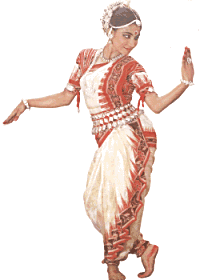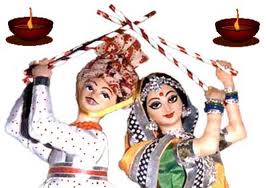 Dance and music are an integral part of Indian life. The body is used most beautifully as a medium of communication to express the various moods and emotions most effectively. The Natya Shastra, written by Bharatha around fourth century BCE, is the source of all forms of Indian classical dance. It is regarded as the fifth Veda. The uniqueness of Indian classical dances is that they are all devotional in content.
Dance and music are an integral part of Indian life. The body is used most beautifully as a medium of communication to express the various moods and emotions most effectively. The Natya Shastra, written by Bharatha around fourth century BCE, is the source of all forms of Indian classical dance. It is regarded as the fifth Veda. The uniqueness of Indian classical dances is that they are all devotional in content.
Brahma, the supreme Creator, is believed to have created Natya by taking literature from the Rig Veda, songs from Sama Veda, abhinaya or expression from Yajur Veda and rasa or aesthetic experience from Atharva Veda.
The Natya Shastra speaks in great detail of the different kinds of postures, facial expressions, mudra or hand expressions, and the attire and ornaments to be used. All dance forms are structured around the nine rasa or emotions. They are hasya (happiness), shoka (sorrow), krodha (anger), karuna (compassion), bhibasta (disgust), adhbhuta (wonder) bhaya (fear), viram (courage) and shanta (serenity). All dance forms follow the same hand movements, with variation creeping in due to local demands.
Bharatha Natyam
This dance is the oldest of the classical dance forms, and its origins can be traced to Bharatha’s Natya Shastra. It is a highly traditional and stylized dance form. Strict about the techniques used in performing it disallows any kind of innovations except in the repertoire and forms of presentation.
Kathak
Kathak finds its roots in katha- story. A band of story-tellers, attached to temples in Northern India, narrated stories from Indian epics. Later they added mime and gesture to their recitation. With the advent of the Muslims, it was brought out of the temples and in to the courts of the rulers.
Kathakali
It is one of the most refined and most scientific dance forms of Kerala. This art demands complete control over practically every fibre of the body. Kathakali draws heavily from drama and is danced with elaborate masks and costumes. The stories for attakathas, the verse text for Kathakali piece are selected from epics and mythologies.
Kuchipudi
This dance drama of Andhra Pradesh is the corresponding style of the Bhagvata Mela Nataka of Tamil Nadu. Except that the emphasis is on the animation, the grammar is derived from the Natya Shastra.
Manipuri
Manipuri is the dance form of Manipur and is inextricably woven into the life of the people of the state. The dance form is mostly ritualistic, and has still preserved the dance drama technique, which draws heavily from the rich lore of the legend and mythology.
Mohiniyattam
This dance form too belongs to the Devadasi dance heritage, like Bharata Natyam, Kuchipudi and Odissi. The word ‘mohini’ literally means the maiden who steals the hearts of men. It is essentially a solo dance.
Odissi
This is also based on the Natya Sashtra and it can be traced back to 2nd Century BC., when the Jain king Shastra ruled. The present Odissi is a solo form. Its technique is built round a basic motif in which the human bodies takes the thrice deflected (tribhanga) position of Indian sculpture.
Yaksha Gana
This belongs to Karnataka and has a rural origin. It is an blend of dance and drama. Its heart lies in ‘Gana’ meaning music. The language is Kannada and the themes are based on Hindu epics. The costumes are almost akin to the Kathakali dance costumes and the style too seems to have drawn inspiration from it. As prescribed in the Natya Shastra, it has the Sutra Dhara (conductor) and the Vidhushaka (the jester).
Chakiarkoothu
This form is performed only by the menbers of the Chakiar caste. A highly orthodox type of entertainment, it can be staged inside temples only and witnessed by the Hindus of the higher castes.
Among the various dance forms in vogue in India are Krishnanattam and Ottanthullal.
 Folk Dances of India
Folk Dances of India
Folk dances have gained more popularity, as they are easier to understand and perform. They do not require the skill and expertise of a classical dance performer. They are performed by the rural folk and are extremely enjoyable. Almost every village has its folk dances. These are performed on festivals, ceremonies etc. All night dance dramas are popular throughout India and mark all major festivals.
Folk dances vary according to the region and sub-cultures. Puppet dances/ drama are also dominant in Indian folklore. In some places puppets are so highly regarded that actors study how to move like puppets. Fold dances have no specific grammar. They fit in with the scheme of festivals in each region.
